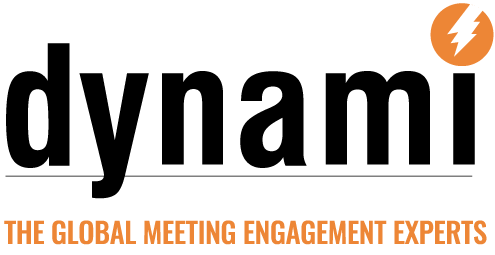When you’re a dedicated meeting professional and you take your job very seriously, you often find yourself holding a two-edged sword. On one hand, you know yesterday’s outta-the-park successful event is very quickly tomorrow’s been-there-before, ho-hummer of a program. Time doesn’t stand still and neither does audiences’ gimme-something-different-every-time expectations.
So, what can you do …?
It certainly helps to stay on top of industry trends and be aware of the latest “
Yeah, I know you’re thinking, “C’mon, Kenneth, this is Meeting Planning 101” but, hey, it’s always helpful to brush up on fundamentals when you find yourself not sleeping well at night because you’re worrying about what to do.
So, come along and let’s take a stroll down Agenda Lane and see if we can’t take that fresh canvas you have for this year’s program and produce a masterpiece. Here are seven things you might want to keep in mind when designing your perfect meeting agenda and flow …
“I know you!”
From the point of arrival to the final departure, you should seek ways to streamline time and make the program flow seamless, efficient and easy. Facial Recognition (FR) is one way to move things along. Big players such as Apple, Facebook and Google have made huge investments in FR recently and it will soon become an integral part of daily life. Travelers are whisking (well, sort of) through security lines in airports utilizing FR technology. Now you can use FR to quickly move your attendees through meeting check-in lines. Save time and hassles with this cool, new technology. (We’ve only scratched the surface when it comes to FR’s role in meeting and events. FR’s future is promising.)
Think quality, not quantity … I mean it!
We all know TED Talks max out at 17 minutes which is an odd number but it works. Keep a laser focus on the reason(s) why your group is even meeting in the first place and use that to decide if suggested content makes the cut or not. When you stick to your guns about delivering only rich and relevant (I italicized that last word for a reason) content, you’ll likely find a lot of nice-to-know-but-don’t-have-to-know “stuff” falls to the wayside. As it should. And your typical 45-minute speaker slot can blessedly become 17 minutes of crisp, targeted, relevant information. (Your audience thanks you, BTW.)
Be Smart … Cell Your Messaging!
Cell phones, tablets and other smart devices are as ubiquitous as air, it seems. You know your audience’s eyes are going to be glued to the screen in your general session or breakout room – the screen in their hands, that is. Accept this and leverage it. Each year, smart devices, including wearables like Apple Watches, become more versatile. Keep this in mind as you build your agenda and your budget. Look for ways to incorporate smart tech.
Maybe you don’t need a main screen and two outriggers. Shave some of your A-V costs, project to a single screen and send speaker-support content directly (PPT, Keynote, video, animation, etc.) directly to smart devices; do on-the-fly audience polling; communicate real-time program changes; and send personalized follow-up messages or answer questions attendees are able to raise via text messages or emails.
Equal Parts Imagination, Accommodation and Organization
Let’s face it, we’ve all reached into our file, pulled out a project folder and started by updating last year’s agenda and program flow. Different venue and backdrop but, blah, the same litany of long-winded speakers and predictable PowerPoint from Sales, Marketing and a leadership message from a C-level suit.
Don’t do it!
Even a talented artist will tell you painting the same ol’ seascapes or western scenes gets really old really fast. If the genius behind the brushstrokes is bored, imagine what it’s like for people strolling through a gallery and seeing yet another version of the same scene.
Seasons of Change
Please, please, please … be extra mindful of peoples’ personal lives. Do your absolute best to plan a program that doesn’t require weekend travel (inbound or outbound) or away-from-home time that bumps up against holidays. In the past, time spent on the road was valuable time out of the office but, let’s face it, office time is becoming less and less important in an ever-connected world.
And it’s worth a reminder: Steer clear of the summer vacation season, if at all possible. Yes, you may save a few bucks on room block and meeting space by booking a South Florida program in mid-August but is it worth the cost of disgruntled attendees? If your program must take place during the typical summertime vacation season, you can always encourage attendees to tack on a family vacation before or after the event by negotiating pre- and post-extensions of your group room rates.
Pace Yourself
When building your perfect program agenda and flow, pay serious attention to pacing. Shorten General Sessions, lengthen breakout sessions where most of the learning and work gets done anyway, and build in longer breaks so people can catch up on phone messages and emails, network more, and actually have a chance to step outside for a breath of fresh air. When you physically reconvene in your meeting space, their minds will be cleared, open and receptive to the next round of presentations.
Also, build in occasional “reflection periods” that allow people to slow down and actually absorb what they’ve just heard and seen. All brains need a rest, even yours. With a little extra time to actually process and distill information, issues that need to be clarified or questions answered can bubble up and be quickly addressed.
Avoid Moody Foodies
“Self-care” is a phrase heard more and more often these days and, as a result, planners should take a wellness tack at all stages of the program – meal times, breaks and after-hours gatherings that include food & beverage. Mindful and informed F&B planning is critical. Pay extra attention not only to trendy, tasty items that will be pleasing to attendees, consider the metabolic effect of each menu item. As meeting attendees have become more fitness-focused, they have also come to expect tasty options that are also healthy. Meet their expectations by putting the power foods – fresh fruit, crudité
Before, During & After
Another great way to save onsite time is to create a pre-program info campaign that pushes out content that can be reviewed prior to arrival, tease to rich content to-come, and pique curiosity and interest. Then once you’ve waved goodbye to the last departing attendee, focus on follow-up messaging that builds on, or reinforces, the rich content they’ve just consumed. Reassigning appropriate content to the before- and after-periods allows you more flexibility to craft a well-thought-out, well-paced, creative and engaging onsite program.
In summary, commit to building “the perfect meeting agenda” by considering some (or all) of the above and you’ll increase the likelihood your program will be another outta-the-parker!
CALL-TO-ACTION / TAKEAWAY MESSAGE / CONCLUSION
Building the perfect meeting agenda takes time, imagination and creativity. Don’t fall into the same ol’, same ol’ trap. Your audience will love you for it!
Cheers,





